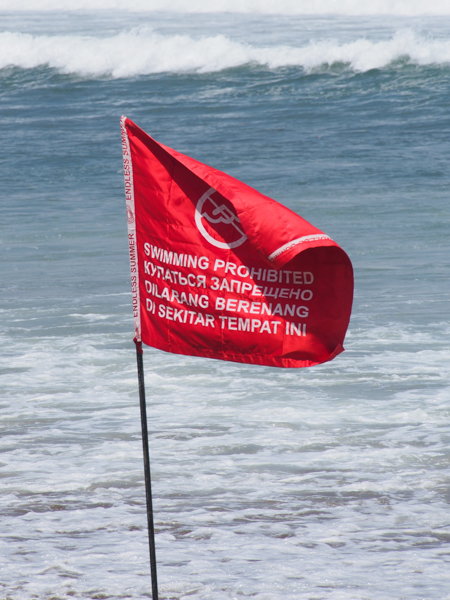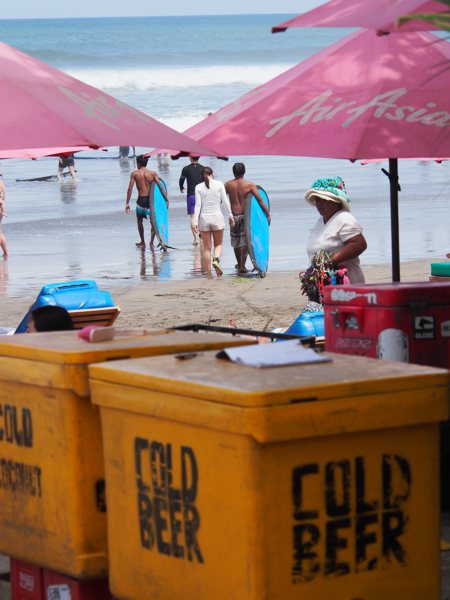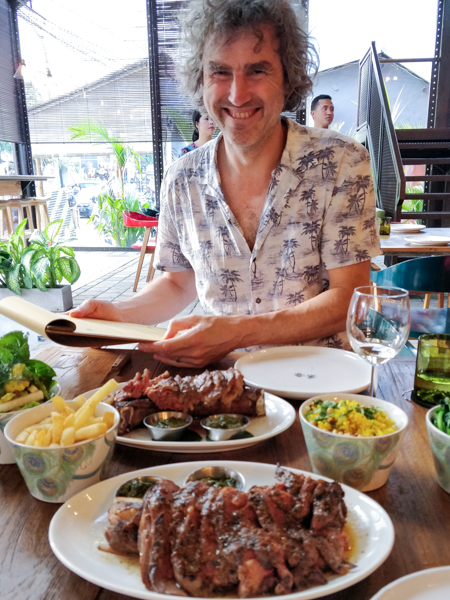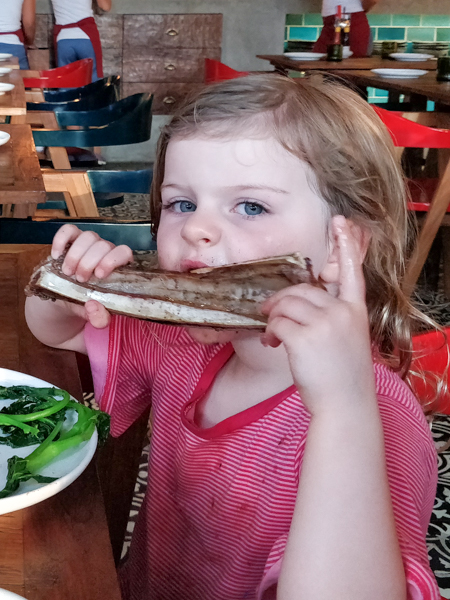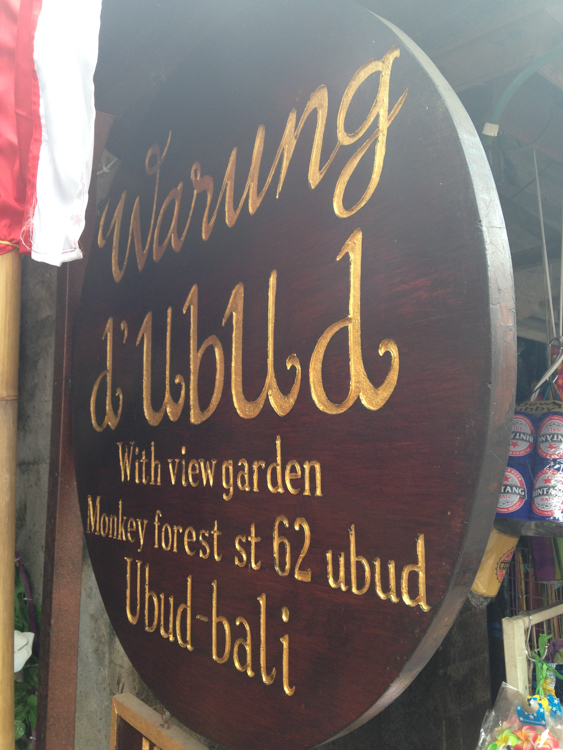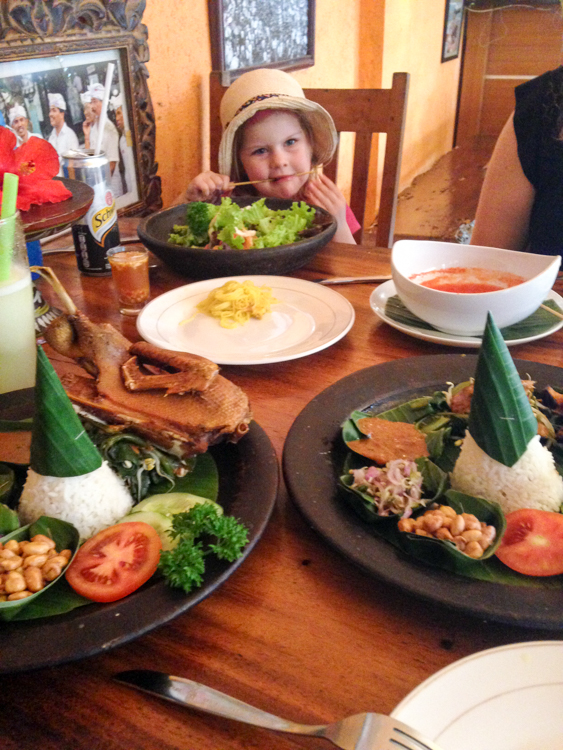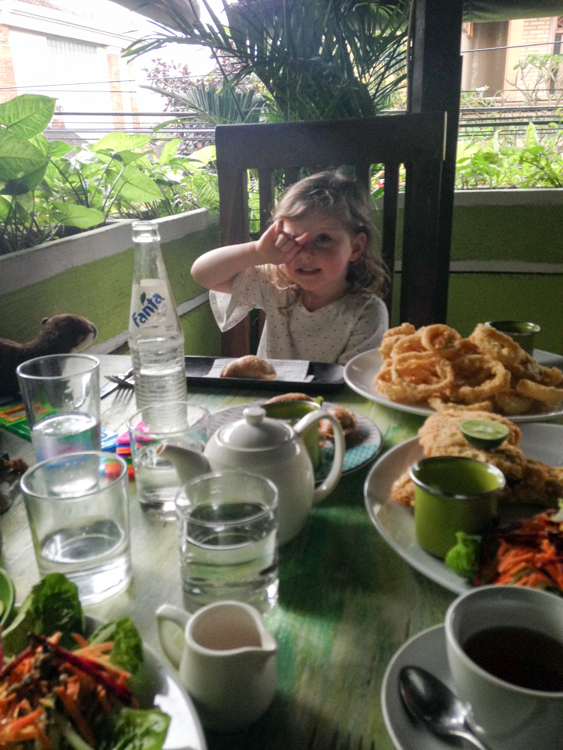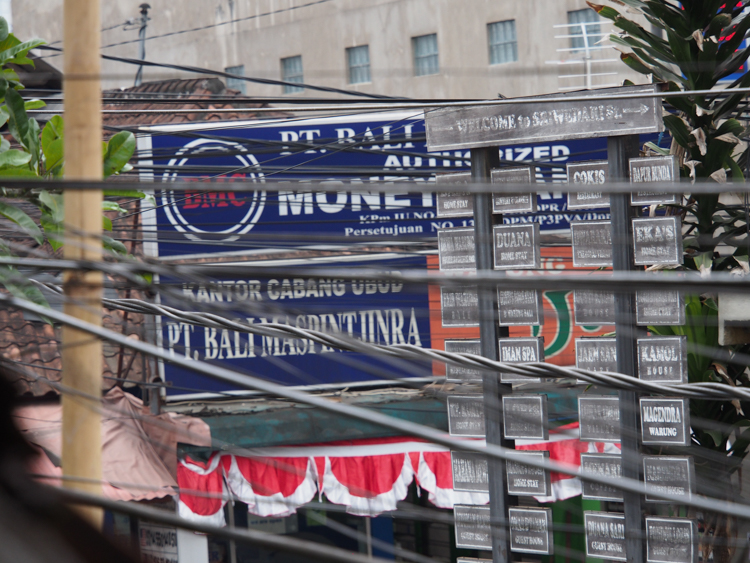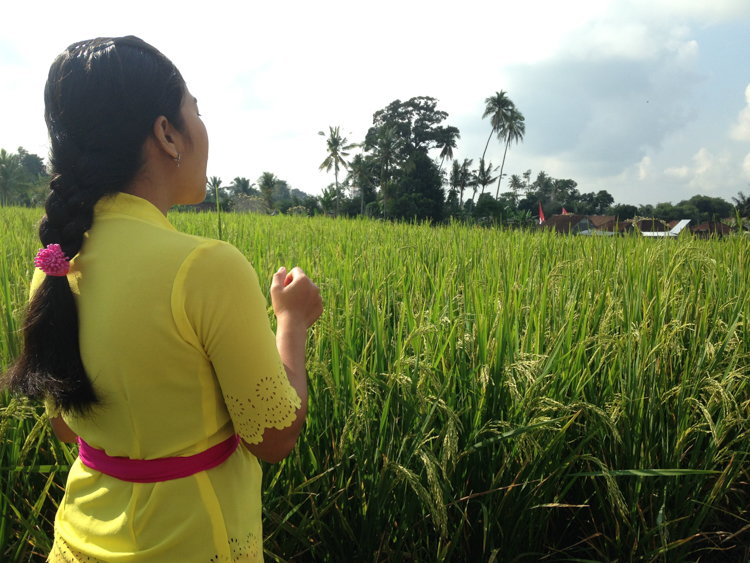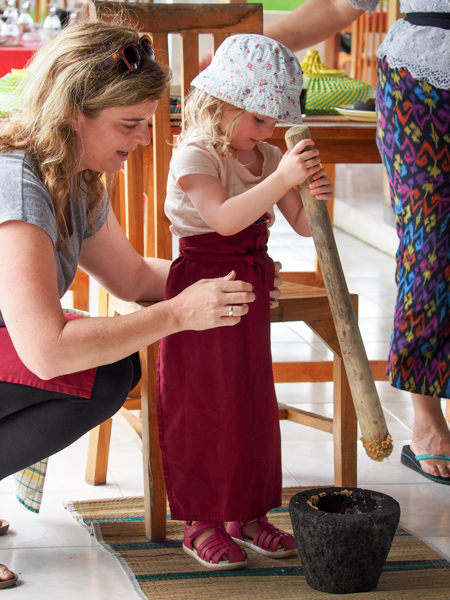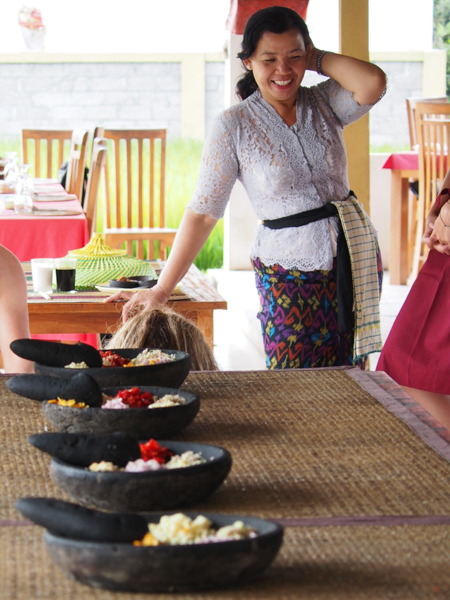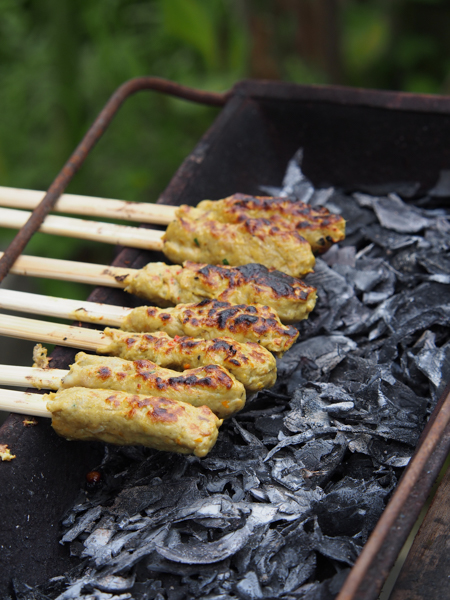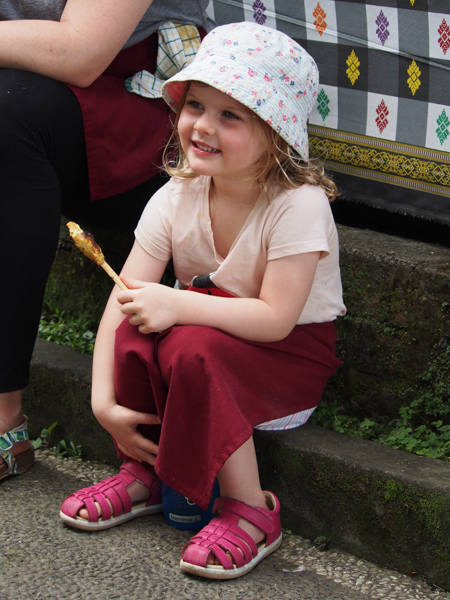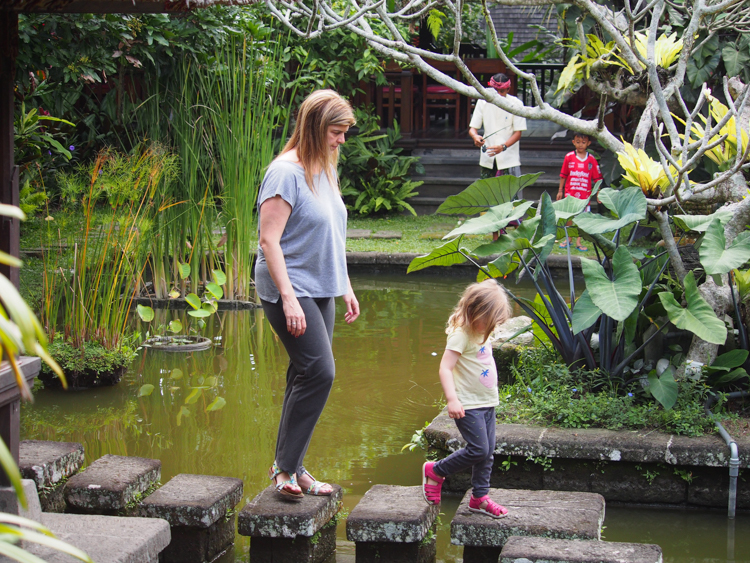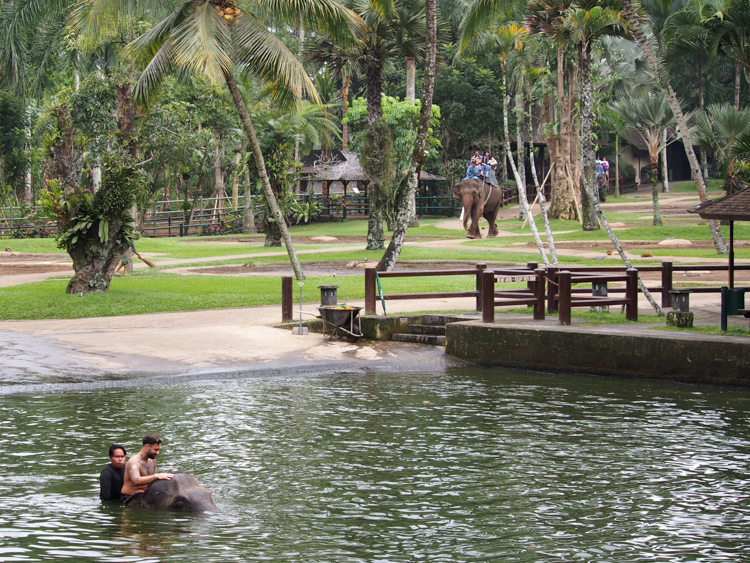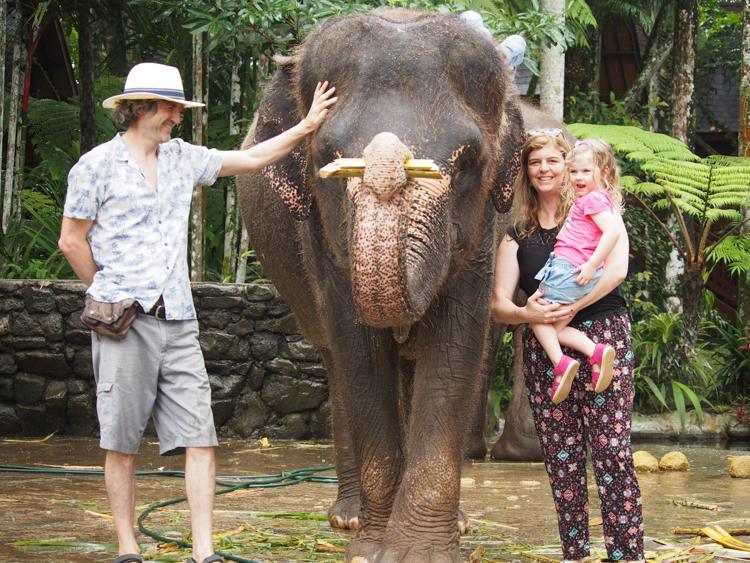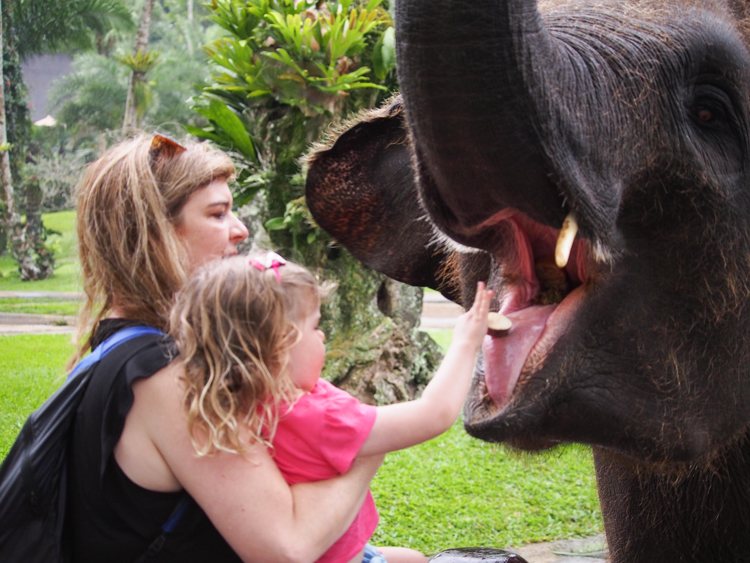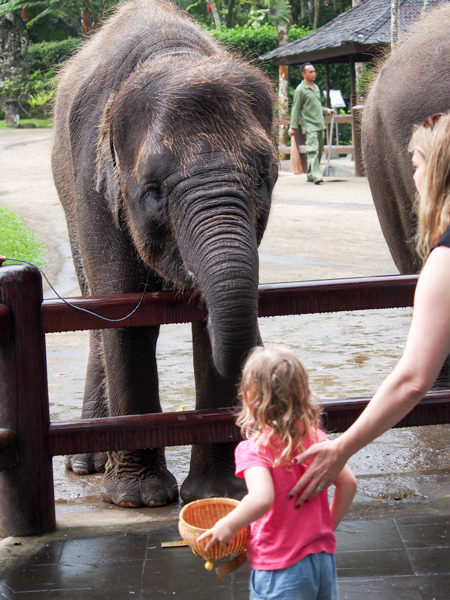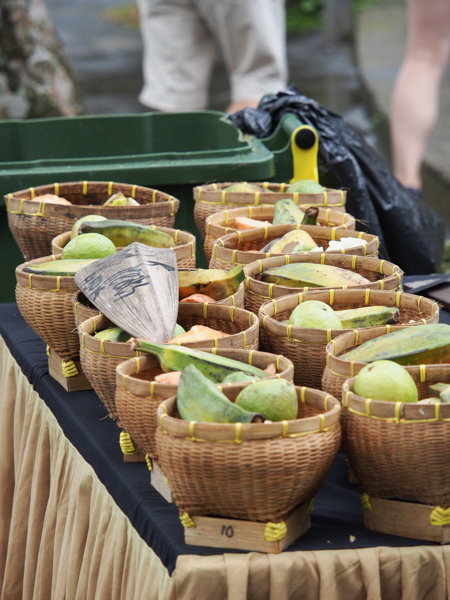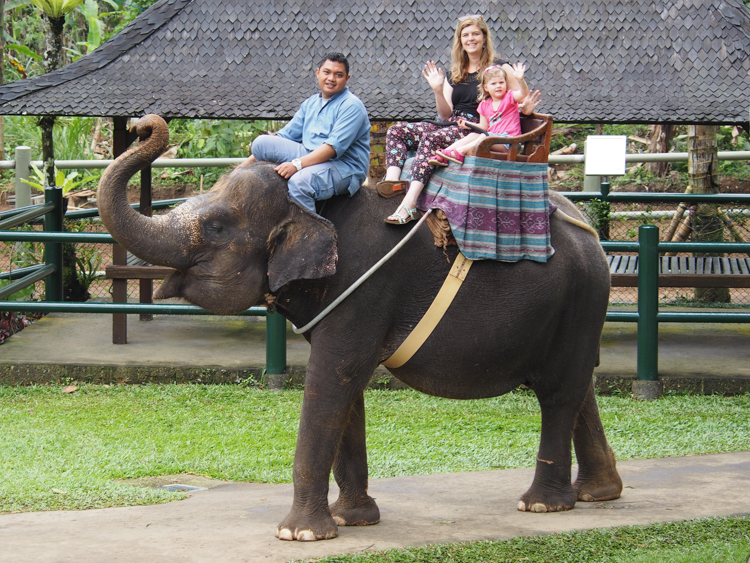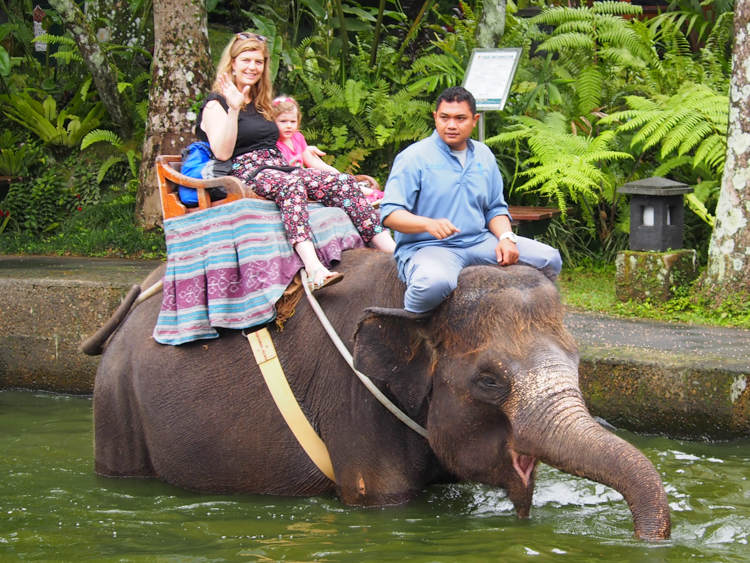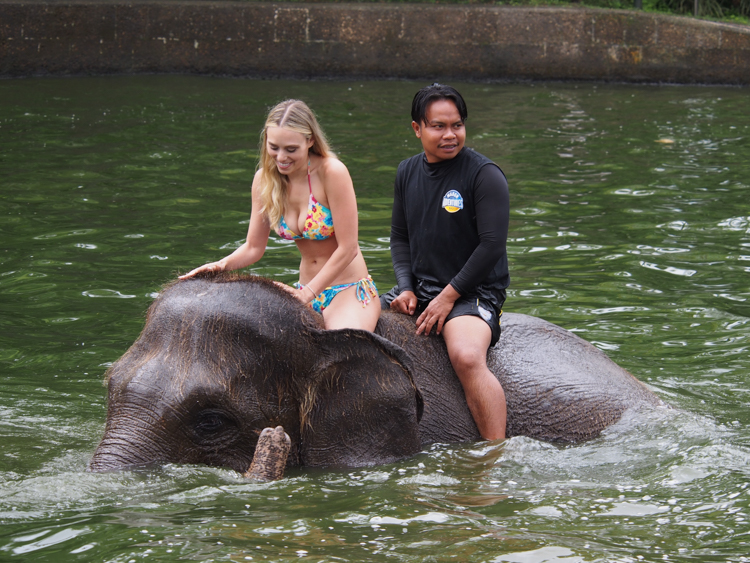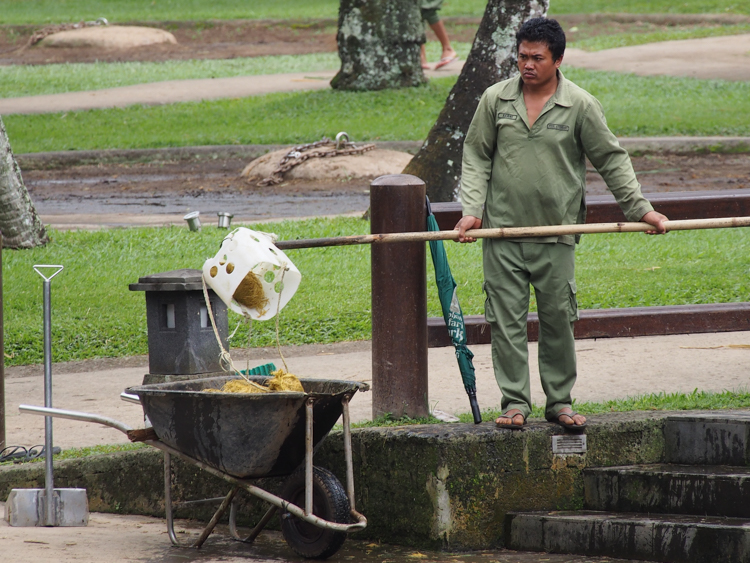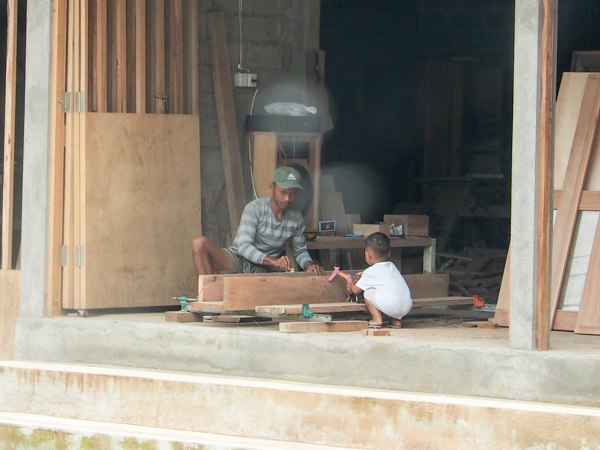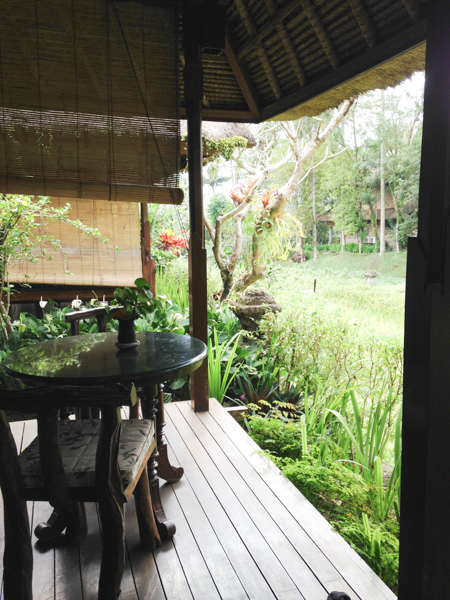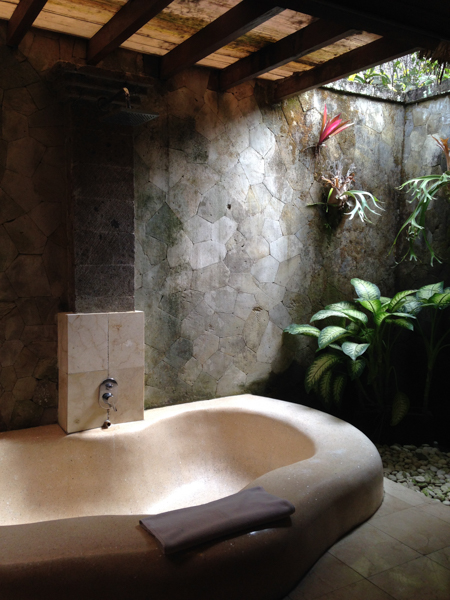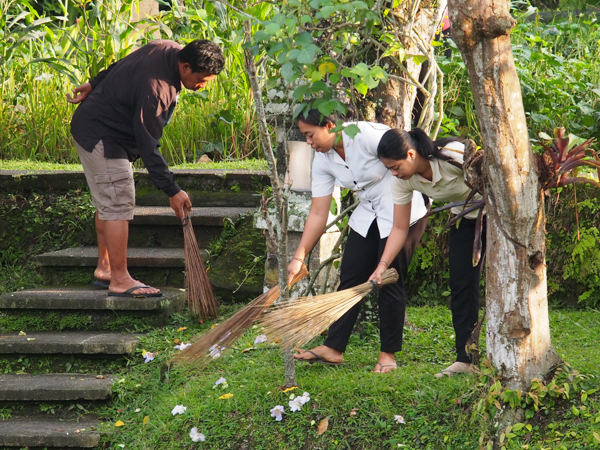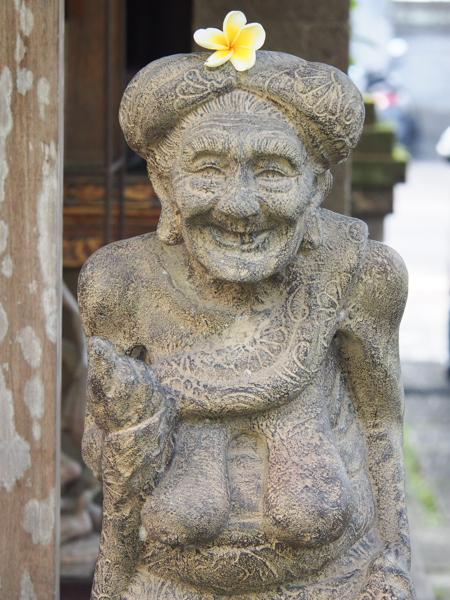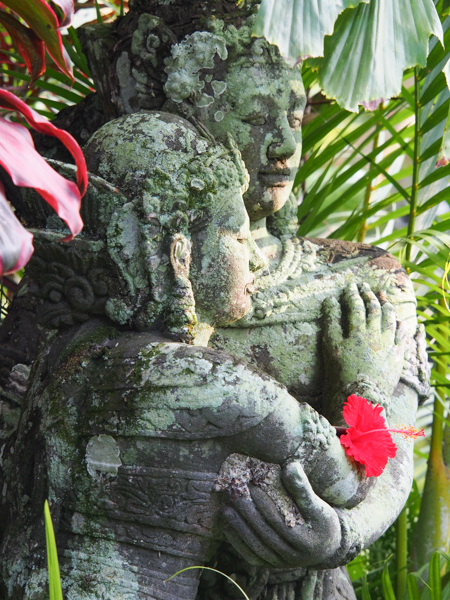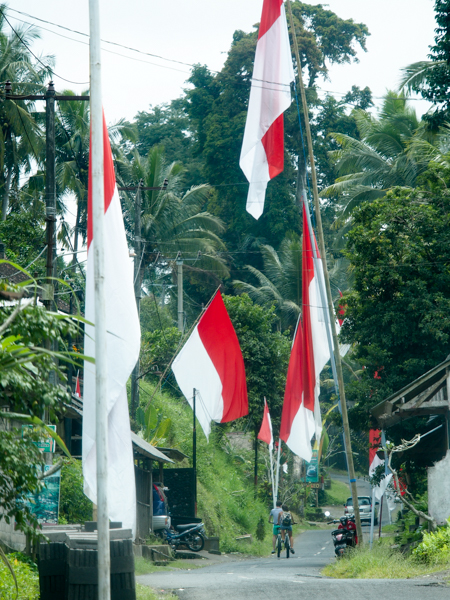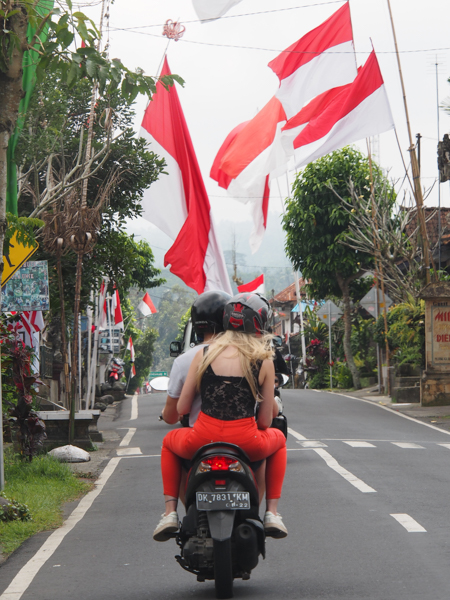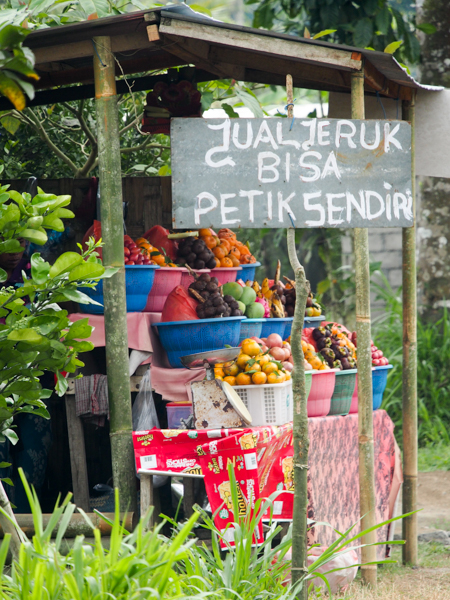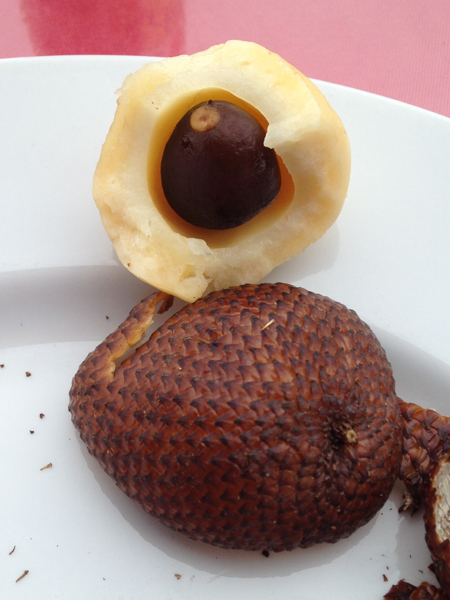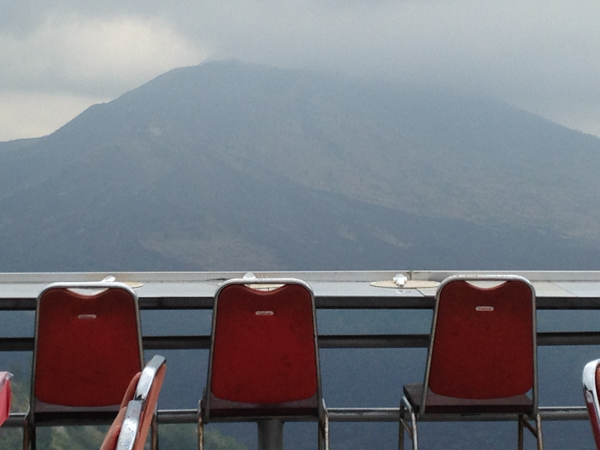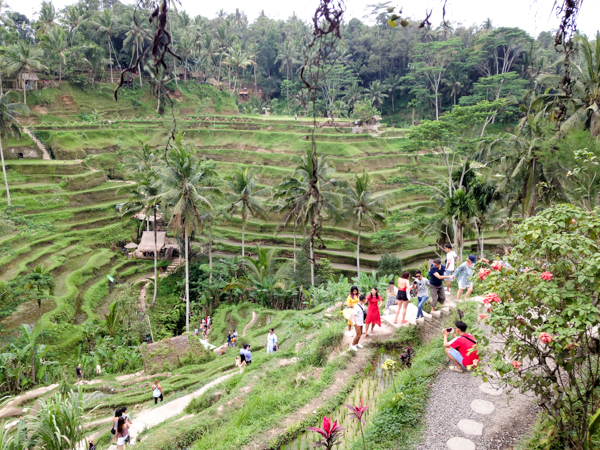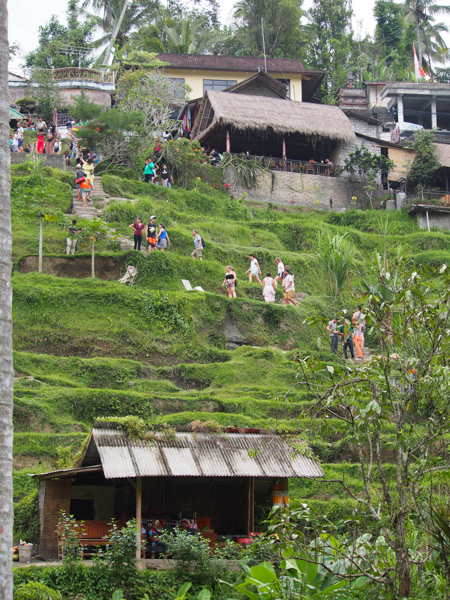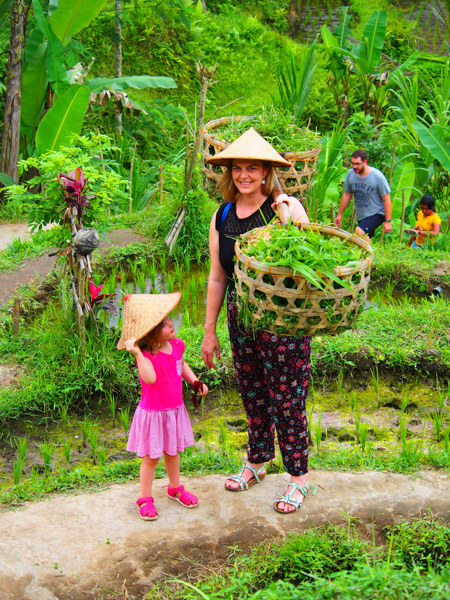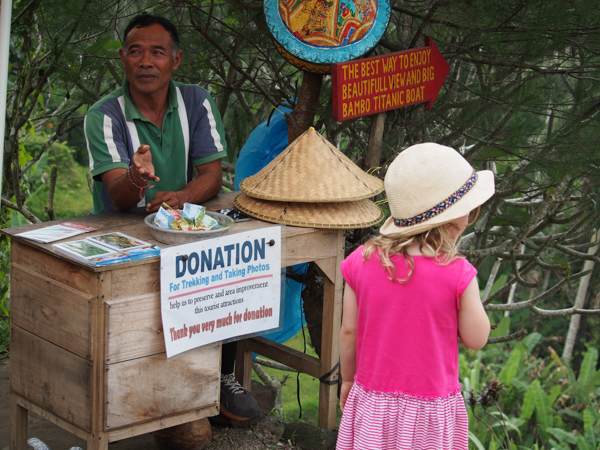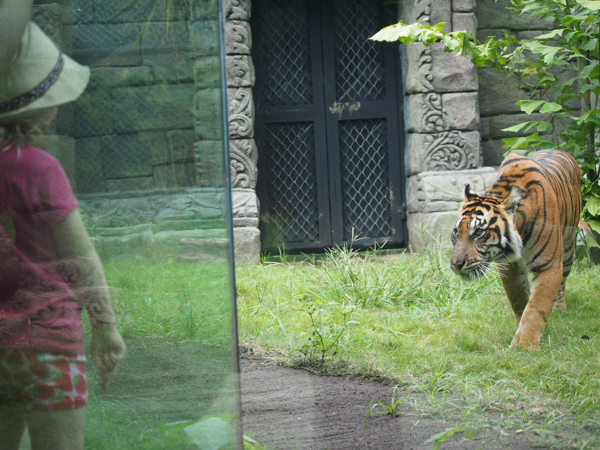We rented a driver to take us from Ubud to Seminyak, which was supposedly more of a beach resort kind of place. The drive took us through Kerobokan, a kind of overcrowded crossroads for the neighbouring cities, and then down into the snails-pace gridlock of cars and scooters that is Seminyak.
Our residence for the next few days is a couple of rooms off a walled courtyard tucked down a secluded alleyway off the main street. The bedrooms reeked of moth-balls, which was not surprising when we discovered that both en-suite bathroom floors were liberally scattered with the toxic chemical. We swept them out into a bin and blew a fan through to get rid of the head-thumping fumes, and then realised that the door of the bedroom that we had intended to give to Berrima opened out directly onto the sunken pool (and I mean directly, a single step would have you in the water), so we had to scratch the idea of a quiet night in a bed of our own.
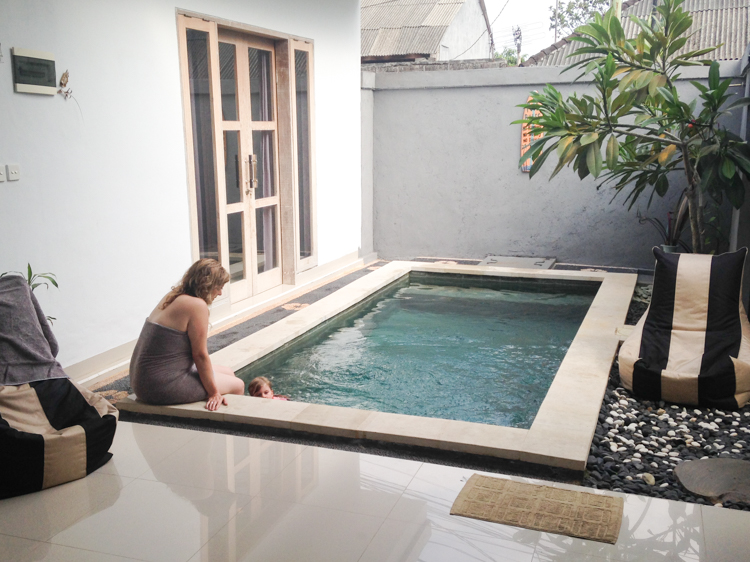
The pool is only a step away from the bedroom
The pool itself is a bit of a curiosity. It would make an excellent and relaxing koi pond, perhaps the centrepiece of a miniature Balinese garden, but instead it is supposed to be a swimming pool a little over two metres long and far less than that across. It was at first hard to fathom who it might be intended for (apart from precocious 3-year olds), but on the other hand the house’s interior decoration of whisky adverts and old spirits bottles might suggest the life-style of the usual clientele.
The ‘full kitchen’, rather charmingly situated outdoors, consists of the tiniest microwave ever made, a stove top and a couple of battered pans, but certainly enough to make coffee in the morning, so we’re all set there.
We headed up the lane to see the delights of Seminyak, passing between the friendly tat salesman and the shyly smiling young girl with the withered arm who was peddling vodka-bottles full of moped fuel at the entrance to the alley.
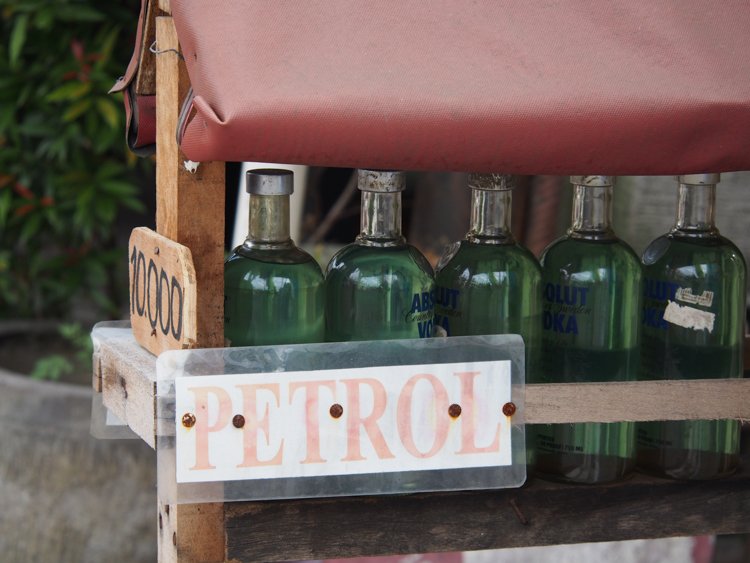
Wherever you go, fuel is sold in vodka bottles
Perhaps I was jaded by the Bali-Belly that I picked up in Ubud, but I found nothing at all to like about downtown Seminyak. It was just a row of tourist shops selling the same tat that they were selling in Ubud, and presumably for higher prices, because we had already driven past all the artisanal streets in Ubud where the stuff seems to be made.
Feeling distinctly out of sorts, I had a lie down in the apartment, and my magical wife arranged for a scooter-borne Balinese masseuse to arrive on the doorstep. This is one tourist attraction that Bali does really well, and I felt much more cheerful afterward.
On the next morning, we were up with the neighbour’s rooster, hence off to an early breakfast at a local eatery for a really quite lovely meal. The food is noticeably better in Seminyak than in Ubud. Over Balinese coffee, we planned a walking route down the high street, across to the famous Seminyak beach, along the strand to 66 Beach, returning back to the high street from the other end of town.
Trying to locate the beach access track, we found ourselves in a hotel bar with no obvious route down to the sand. We initially sat at a sort of circular sun lounger, but were told that there was a minimum 1 million rupiah cover charge. This seemed over the top for a cup of coffee, so we moved to a smaller, less pretentious table. We waited for somebody to come and serve us but to no avail, so we got up and left and, having secured directions from one of the many security guards, found our way onto the sand.
This is supposed to be one of the main attractions of the town, and we had picked our second stay in Bali to give Berrima some beach time. However, when we arrived, the tide was in and both the surf and the “do not swim” flags were up.
The thin strip of gritty volcanic sand was packed with bar tables, sun loungers, umbrellas, and litter. Walking along the small strip of tide-wracked rubbish, the occasional wave washed up over our feet and then attempted to rip us out to sea into the crashing breakers.
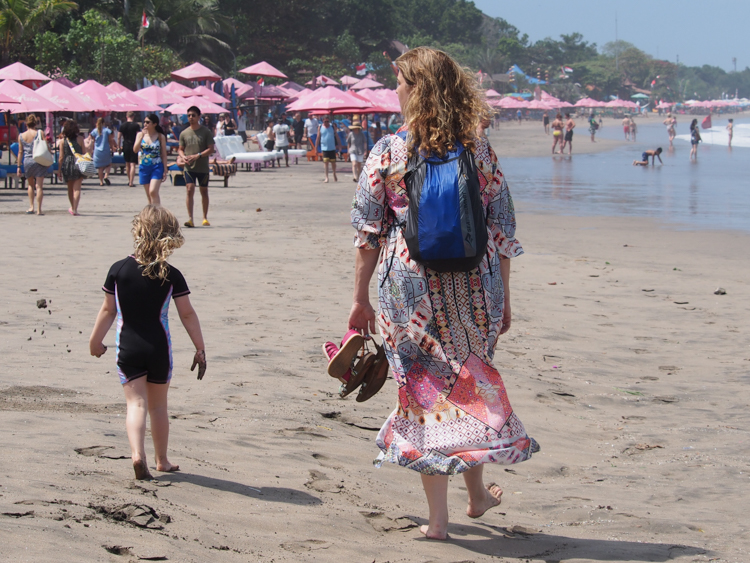
All dressed up with no place to play
It really wasn’t very pleasant at all, and we were glad to find an alley between stacks of beer coolers which led back into town.
As travellers go, we can be pretty stubborn in our pursuit of the ‘real world’. Finally, though, we had to accept the obvious; that the whole island of Bali is given over to a particular kind of spend-by-day, party-by-night tourism, and that the tourist industry is the centre of the culture.
Admitting defeat, we spent our final day at the Waterbom fun park, riding the flumes. The experience was surprisingly inexpensive and very enjoyable for all. The queues were short, the rides fun for adults and children alike, the staff delightful, and the food excellent.
At the end of the day, tired and happy, we were attempting to negotiate a return fare with a taxi driver in the street outside. We had reached an impasse where our highest offer had been rebuffed, when a passer-by suddenly leaned in and said that he would take us for that price. He turned out to be a Waterbom employee on his way home, and in short order we found ourselves cocooned in his tricked-up hot-hatch with lurid orange leather trim and violet highlights.
After a quick change of clothes, we went straight to the acclaimed tourist restaurant Jackson Lily’s for an incomparable steak dinner, easily the most enjoyable eating experience of the whole trip. If you can’t beat them, join them.
